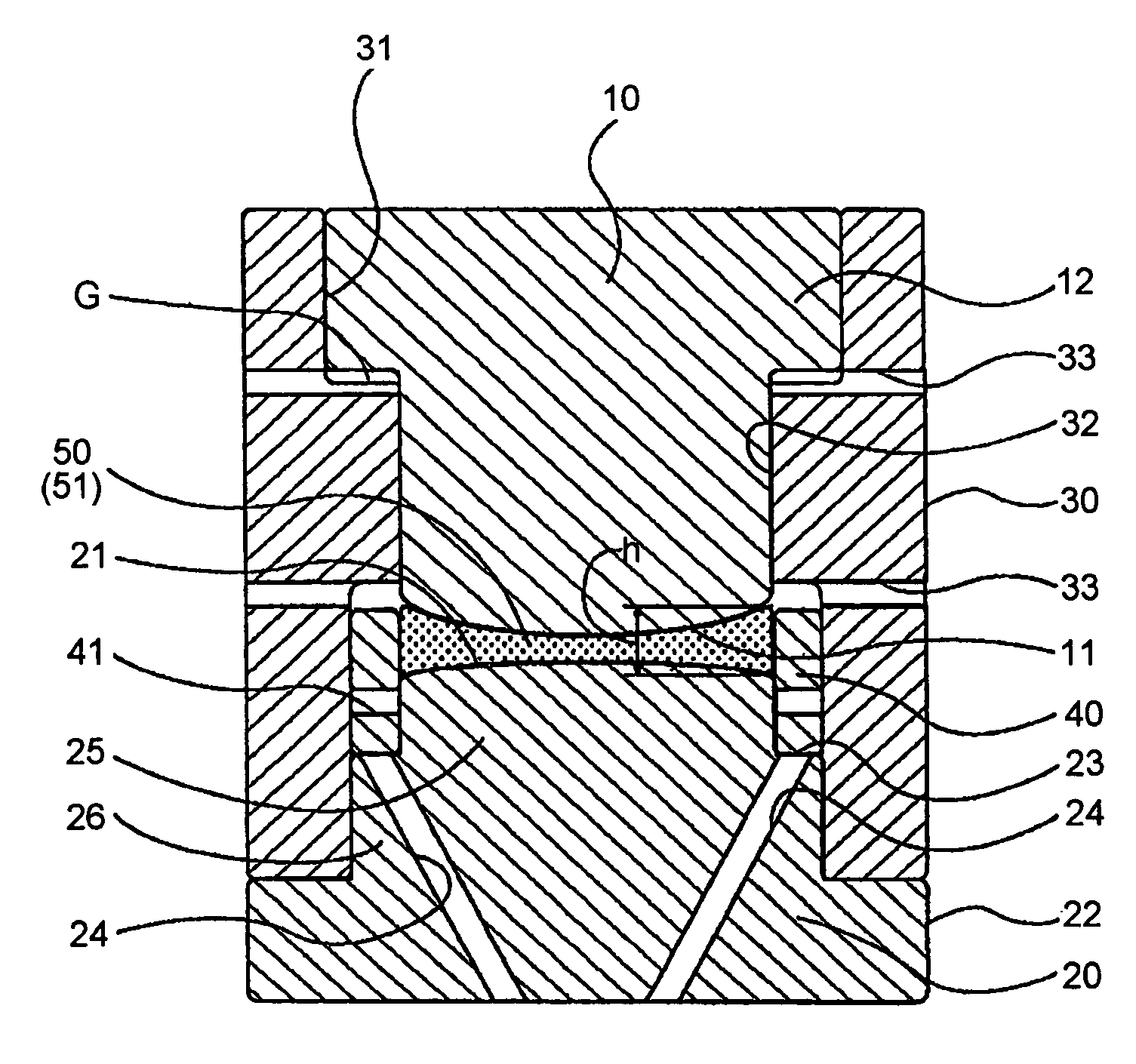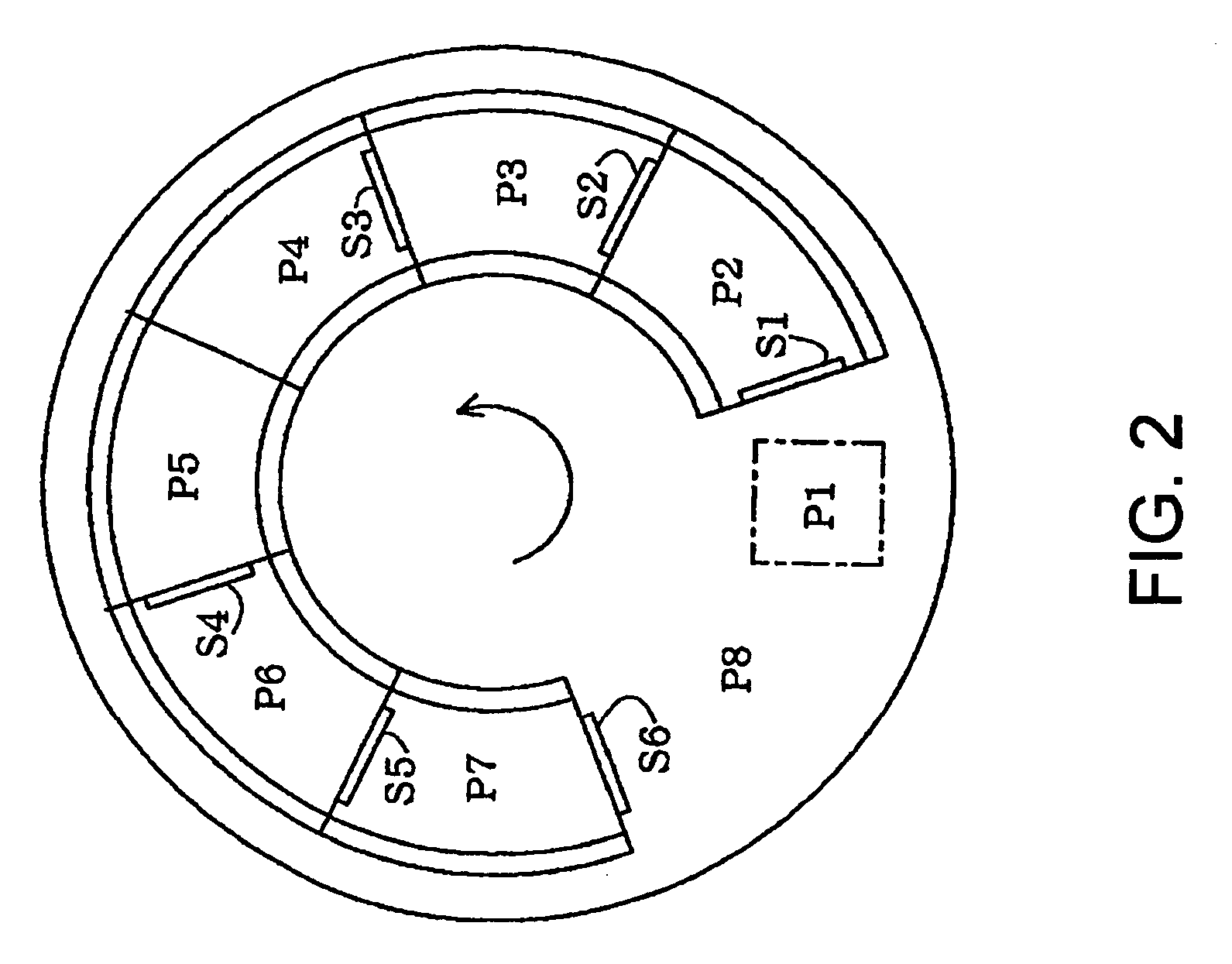Press mold and method of manufacturing optical element
a technology of optical elements and press molds, which is applied in the field of press molds, can solve the problems of difficult positioning of molding materials, degrading surface accuracy in terms of optical functions, and difficult to place molding materials at the center position of the molding surface of the lower mold, so as to reduce the amount of molding material needed for individual molding, reduce the amount of molding material needed, and reduce the effect of temperature rise and drop
- Summary
- Abstract
- Description
- Claims
- Application Information
AI Technical Summary
Benefits of technology
Problems solved by technology
Method used
Image
Examples
Embodiment Construction
[0041]Now, referring to the drawings, description will be made about preferred embodiments of a press mold and an optical element manufacturing method according to this invention.
[Press Mold]
[0042]At first, the embodiment of the press mold according to this invention will be described with reference to FIG. 1. FIG. 1 is a schematic sectional view of the press mold according to this embodiment and shows the state at the time of application of a pressing load (see FIG. 4D, (8)).
[0043]The press mold shown in FIG. 1 comprises an upper mold 10, a lower mold 20, a first sleeve 30, and a second sleeve 40 and is adapted to press-mold a molding material 50 between the upper mold 10 and the lower mold 20.
[0044]In this embodiment, the first sleeve 30 serves to slidingly guide the upper and lower molds 10 and 20 so as to regulate the relative position between them in the horizontal direction at the time of assembly of the press mold and at the time of press molding, thereby ensuring coaxiality ...
PUM
| Property | Measurement | Unit |
|---|---|---|
| diameter | aaaaa | aaaaa |
| diameter | aaaaa | aaaaa |
| thickness | aaaaa | aaaaa |
Abstract
Description
Claims
Application Information
 Login to View More
Login to View More - R&D
- Intellectual Property
- Life Sciences
- Materials
- Tech Scout
- Unparalleled Data Quality
- Higher Quality Content
- 60% Fewer Hallucinations
Browse by: Latest US Patents, China's latest patents, Technical Efficacy Thesaurus, Application Domain, Technology Topic, Popular Technical Reports.
© 2025 PatSnap. All rights reserved.Legal|Privacy policy|Modern Slavery Act Transparency Statement|Sitemap|About US| Contact US: help@patsnap.com



